Innovation and industry have long been the bywords of the booming, bustling city of Manchester. Fringed by the Cheshire Plain to the south and the Pennines to the north and east, the world’s first industrialised city sprang up at the turn of the 19th century and it hasn’t looked back since.
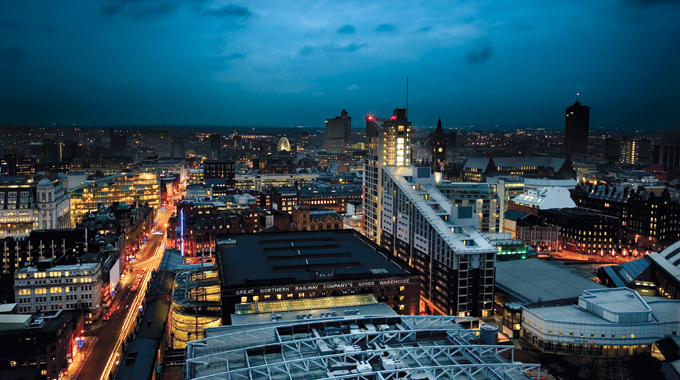
Manchester has much to answer for. Including, in no particular order: atomic science, canals, feminism, industrialisation, passenger railways and professional football. Some of these claims can of course be taken with a large pinch of salt. It is commonly held that the Industrial Revolution, as the social equivalent of the Big Bang, transformed Manchester from a disease-ridden provincial town into a metropolis that ruled the world. In fact, Manchester was a relatively wealthy small market town when Richard Arkwright built his first mill in 1780 and the modern world sprang into being. The reign of ‘King Cotton’ saw the city transformed, leading Benjamin Disraeli to state that “Certainly Manchester is the most wonderful city of modern times.”
This fizzing era of invention, commercialisation and eventually exploitation saw Manchester become home to the first commercial railway and the first canal, both essential elements in the movement of goods and people that meant the city would become a leader in economic and social progress and, as the whole country followed suit, that Britain became the dominant influence across the globe.
Wandering around Manchester today, the legacy of Victorian entrepreneurship is evident in the handsome red-brick buildings scattered across the city. For a long time Ancoats, the area of Manchester with the highest concentration of mills, was a no-go locale. Nowadays it is bursting back to life with the mills being transformed into industrial-chic apartments and art projects. It is well worth whiling away an hour or two finding the ‘Ancoats Peeps’, brass spyglasses built into the sides of the mills, revealing glimpses of the buildings’ former lives, including clockwork mechanisms, pumps or even a bell tower.
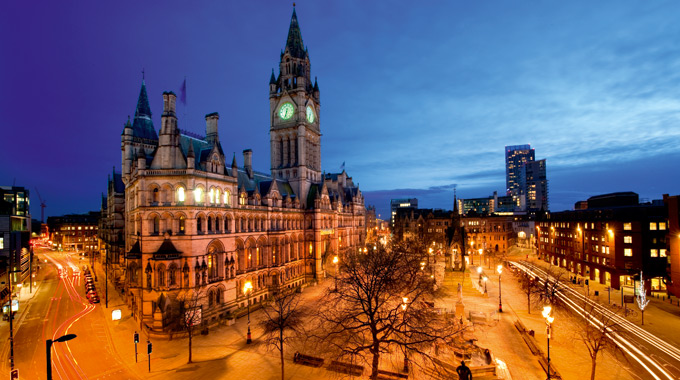
Perhaps the most visible encapsulation of Victorian Manchester is the Town Hall, situated on St Peter’s Square. Designed by Alfred Waterhouse and completed in 1877, it is festooned with symbols of the source of the city’s wealth – cotton flowers – and entrepreneurial spirit in the form of busy worker bees. Its neo-gothic majesty, regarded as one of the finest examples in the UK, has stood in for the Houses of Parliament on film, despite being a working municipal hub. The sculpture gallery is a great place for a cuppa but the real attraction is a set of wall murals by Ford Madox Brown. Summing up the history of Manchester in 12 frames, it is an excellent starting point for an exploration of the city.
But a darker shadow can be found under Manchester’s mantle of Victorian red-brick respectability if you know where to look. Slums sprang up like mushrooms in the damp Mancunian atmosphere (it is this special quality of dampness that apparently makes it the perfect for handling cotton. If by chance there was a non-rainy day, mill foremen would spray water in the weaving rooms to keep the cotton manageable). So if Manchester has been the midwife to economic revolution it has also been a crucible for radicalism. Friedrich Engels, himself a wealthy bourgeois, visited the Little Ireland area of Manchester and was so appalled by the slum circumstances that he documented them in The Conditions of the Working Class in England, a classic account of the effect industrial conditions had on the poor. From here he formed an intellectual partnership with Karl Marx and together they developed Marxism and Communism. Chetham’s Library, where the two met to discuss their work, still has the window seat on which they would sit. Manchester was also the home of the anti-Corn Law League, the first modern political movement, and the first meeting of the TUC was held here in 1868. The People’s History Museum, on the banks of the River Irwell, is a fine place to get a sense of Manchester’s radical history, and the Working Class Movement Library in Salford is a must-visit for scholars of the subject.
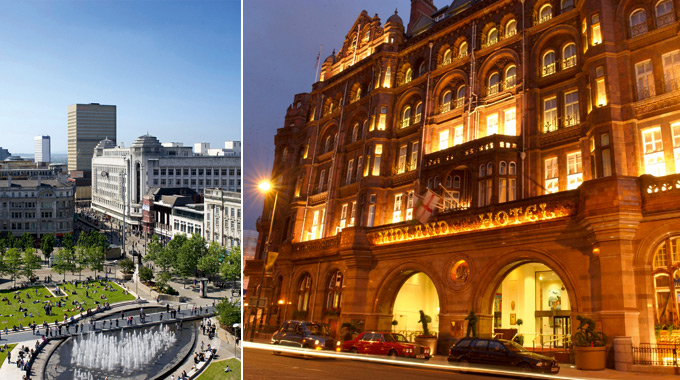
Manchester’s womenfolk were also a radical crew, with Ann Lee founding the Shakers, and Emmeline Pankhurst (born and raised in the now-infamous Moss Side area and named one of Time magazine’s 100 people of the 20th century) being the leader of the Women’s Suffrage movement. Liberal thinking was also reflected in the The Manchester Guardian (now just plain The Guardian). Its most celebrated editor, CP Scott, made the mission statement “Comment is free, but facts are sacred”, setting the tone in principle, if not in practice, for newspapers the world over.
Intellectual achievement has also been a breeding ground for a clutch of Manchester firsts. Ernest Rutherford first split the atom at Manchester University in 1919, considered the watershed moment in nuclear physics (His assistant, Hans Geiger, also invented the famous Geiger counter). The father of atomic theory, John Dalton, also lived and worked in Manchester, inventing meteorology and describing colour blindness while he was at it. The first stored programme computer, nicknamed ‘the Baby’, was invented in Manchester by Professors Tom Kilburn and Fred Williams, assisted by Alan Turing. Local firm Ferranti developed the machine into the Ferranti Mark 1, the world’s first commercially available general-purpose computer. The parents of Tim Berners-Lee (who went on to invent the world-wide web) worked together on the Ferranti Mark 1, first meeting at the firm’s Christmas party in 1952 – a party that arguably changed the world. The tradition of invention is carried on today by Nobel-prize winning scientists Andre Geim and Konstantin Novoselov, who discovered graphene, the first two-dimensional material.
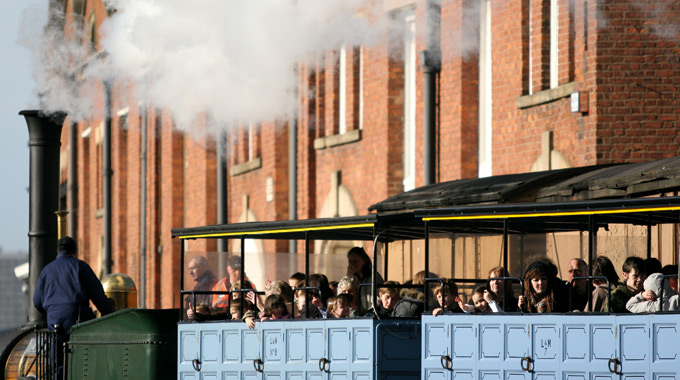
Many of these firsts, including a model of the first railway, can be seen at the wonderful MOSI (Museum of Science and Industry). The University’s own Manchester Museum has a wonderful collection of oddities and close by the Whitworth Art Gallery a has an interesting selection of textiles, as befits Cottonopolis. Those interested in the end product should visit Platt Field’s Gallery of Costume, or venture further afield to Stockport’s Hat Works Museum.
Another of Manchester’s most famous firsts, one that has altered countless lives across the world, was the establishment of the world’s first professional football league in 1888. Manchester United is probably the most famous team in the world, with an estimated 72 million fans in China alone. Manchester City formed a blue shadow to the red devils until their title win last year. The crackling rivalry between the teams makes Manchester one of the most passionate football cities in the world and the ideal place to host the new National Museum of Football. Here you’ll find the 1966 World Cup final ball, Maradona’s ‘hand of god’ shirt and the UEFA Cup winner’s Cup, as well as a host of interactive features.
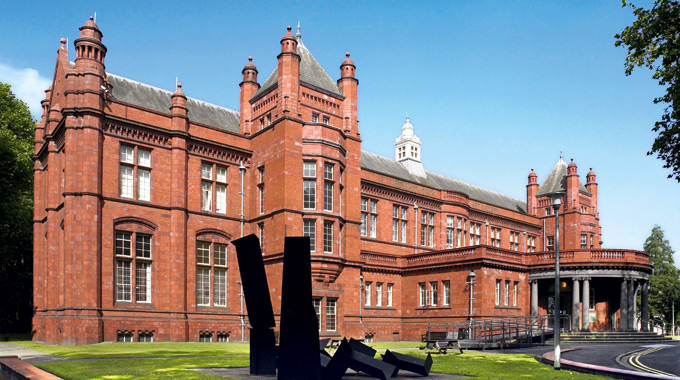
Manchester is a bibliophile’s dream. The first person to borrow from a public lending library had his ticket stamped here in 1852. Chetham’s can lay claim to being the UK’s oldest free public library, while the John Rylands Library on Deansgate, a Gothic temple built as a memoriam to the multi-millionaire of the same name, holds many precious texts including a fragment of the Old Testament. The private Portico Library is also a must-visit. In this small but perfectly formed gem, Mark Roget began writing his indispensable Thesaurus.
Manchester also has a collection of less well-known firsts. The Flodden Window, a stained glass window depicting archers at the Battle of Flodden Field, resides at St Leonard’s Parish Church in Middleton and is thought to be the first-ever war memorial. The French restaurant in the Midland Hotel was the recipient of Britain’s first Michelin star; the first-ever Marks & Spencer opened in Manchester in 1894 and perhaps most bizarrely, Britain’s first matador was from Salford, which brings us to Manchester’s sister city. Separated only by the River Irwell, the two are so intertwined that most cannot tell them apart, and though like all siblings there is a fierce rivalry, their future certainly lies together.
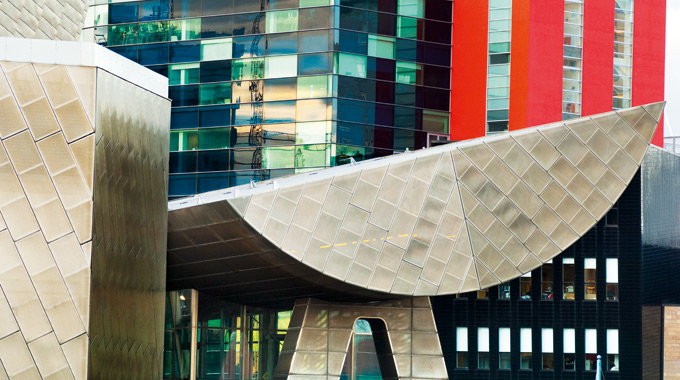
Salford functioned as essential dockland during the rapid expansion of the Industrial Revolution and the flatness of the area has leant itself to urban regeneration. Today, the sparklingly clean docks host water sports set against the contemporary outlines of Daniel Libeskind’s Imperial War Museum and the Lowry Centre.
Nowadays, most people have probably heard of Salford as the new home of much of the BBC’s output, the corporation settling into its purpose-built Media City home. One studio is located in an old pie factory, the giant ovens apparently making perfect sound stages. Nostalgia buffs can wander past the Blue Peter garden, and BBC tours give a real insight into the workings of a worldwide media network. It is fitting that during its construction, Media City was the biggest engineering works in the country, a title that was true of the Manchester Ship Canal a hundred years or so before it. Together, Manchester and Salford look forward. The past is about invention, radicalism and getting the job done. The future can only hold more of the same.
| Related articles Made in Britain Remarkable British women Manchester Discover Liverpool Sherlock Holmes places to visit |
Click here to subscribe! |

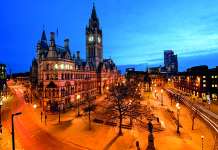
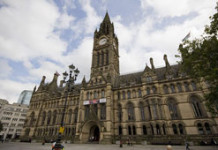
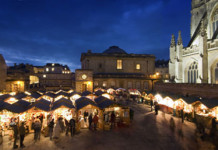

 © 2024
© 2024